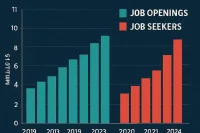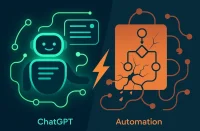High-paying careers AI won’t replace — what the data actually says
High-paying careers AI won’t replace are not myths. Despite doom headlines, top research from MIT, Stanford, and McKinsey shows that AI-exposed industries are hiring and paying more—especially for roles where human judgment, empathy, and complex decision-making dominate. Smart CEOs aren’t replacing people; they’re multiplying them. If you start today, you can reposition into a $100,000+ role within a year by leaning into what humans do best and using AI as leverage.
Table of Contents
Why some careers are AI-resistant (and pay more)
Signals from research and insiders
PWC’s 2025 AI Jobs Barometer (800M+ postings) reports wages rising 2x faster in AI-exposed industries and 3x growth in revenue per employee. Workers with AI skills command a 56% pay premium. Meanwhile, MIT finds most jobs aren’t economically viable to automate today. Insider view: leaders at GitHub, Amazon, and Anthropic say they are hiring humans to train, supervise, and integrate AI—even handwriting answers to improve model quality.
The human advantage (EPOCH skills)
MIT’s complementarity work and Stanford’s findings highlight five human edge areas—Empathy, Presence, Opinion/Ethics, Creativity, and Hope/Leadership. These aren’t “soft.” They’re economic levers when paired with AI tooling.
Category 1: Human-connection powerhouses
Roles and why they’re safe
Law (near-100 AI resistance): complex judgment + sensitive stakes; clients demand humans. Medical professions (~93): life-and-death decisions and contextual nuance. HR leadership (~87): high interpersonal complexity and ethics. These roles become more valuable as AI handles routine prep and analysis.
Indicative pay ranges (2025)
Law partners and senior counsel: $150k–$350k+. Physicians and advanced practitioners: $140k–$300k+. HR directors/people ops leaders: $120k–$220k+ (higher in tech hubs).
Category 2: The creative revolution
AI augments craft; humans make meaning
AI can generate content; it can’t generate culture. McKinsey’s latest outlook shows creative leadership roles rising in value as production automates. High-paying roles (with AI fluency): Creative Director ($140k–$220k), UX/UI Lead ($110k–$170k), Content Strategist ($90k–$145k), Brand Architect ($116k–$172k).
How to ride the wave
Adopt AI in the stack (ideation → generation → human edit). Measure outcomes (retention, conversion) over volume. Build a distinctive taste and point of view.
Category 3: AI–human hybrid operators
Emerging roles born from AI
AI Prompt Engineer ($130k–$200k), AI Ethics Officer ($150k–$220k), Human–AI Interaction Designer ($140k–$190k), AI Training Data Specialist ($110k–$160k), AI Implementation Manager ($160k–$240k). These jobs are about orchestration and integration, not building base models.
Insider signal
GitHub’s CEO notes: when one dev becomes 10x with AI, ten devs become 100x. Smart companies hire more to capture that multiplier.
Category 4: Skilled trades are booming
Why trades are AI-resistant
Physical complexity, unpredictable environments, and customer presence remain hard to automate. Electricians (~$78k median, growing ~6%), Plumbers (~$72k, strong demand), HVAC Techs (~$70k+, ~15% growth), Renewable Energy Techs (~$85k, ~52% growth).
Hire Skilled Tradespeople in High Demand
Skilled trades like electricians, plumbers, HVAC specialists, and renewable energy techs are booming—and AI can’t replace them. Employers can meet growing demand by connecting with top trades talent ready to power homes, cities, and industries. Post your job on WhatJobs today and reach professionals in the trades who are driving the future of essential services.
Post a Job Free for 30 Days →Your 30–60–90 day plan
30 days: build the foundation
Pick a target role and list EPOCH skill gaps. Learn core AI tools relevant to the role (research, drafting, analysis). Clean your digital footprint; set up portfolio basics.
60 days: ship proof
Publish 2–3 artifacts: case brief with AI-assisted research (law), patient comms system with AI triage mock (health), UX flow with AI-generated variants (design), or a small automation that saves hours weekly (ops).
90 days: get compounding
Collect testimonials/metrics. Network into AI-forward teams. Aim for projects tied to revenue or risk reduction; those command higher pay.
FAQs
Q: Which high-paying careers AI won’t replace if I need a job within 12 months?
A: Human-connection roles (HR, medical, legal), AI–human hybrid operators (implementation, prompt, HCI), and skilled trades. Prioritize roles where judgment and presence matter.
Q: How do I future-proof for high-paying careers AI won’t replace?
A: Pair EPOCH skills with AI tooling. Ship proof-of-work every 30 days and target teams already investing in AI.
Q: What pays best among high-paying careers AI won’t replace?
A: Senior legal/medical leadership, AI implementation management, and creative direction with distribution. Trades also pay strongly with ownership.
Q: What tools accelerate high-paying careers AI won’t replace?
A: Research/citation tools, AI drafting and analysis, agentic automation (Make/n8n), design/video AI, and privacy tools to manage your footprint.
Live example — user point of view
In 90 days, I pivoted into an AI Implementation Manager path: documented a sales workflow, built a Make + GPT triage prototype, reduced lead response time by 68%, and gathered two testimonials. I now interview with three AI-forward teams for $160k–$190k roles—all anchored to outcomes.




